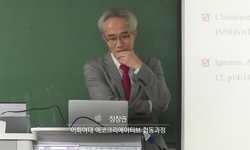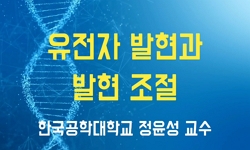The article illustratively shows the tension between law and innovation, which has reached a new dimension with the advent and digitalization of information and communication technologies. As a main problem of this tension, the author recognizes the l...
http://chineseinput.net/에서 pinyin(병음)방식으로 중국어를 변환할 수 있습니다.
변환된 중국어를 복사하여 사용하시면 됩니다.
- 中文 을 입력하시려면 zhongwen을 입력하시고 space를누르시면됩니다.
- 北京 을 입력하시려면 beijing을 입력하시고 space를 누르시면 됩니다.
https://www.riss.kr/link?id=A103062687
-
저자
Thomas Fetzer (University of Mannheim)

- 발행기관
- 학술지명
- 권호사항
-
발행연도
2016
-
작성언어
English
- 주제어
-
등재정보
KCI등재
-
자료형태
학술저널
- 발행기관 URL
-
수록면
30-48(19쪽)
-
KCI 피인용횟수
0
- 제공처
-
0
상세조회 -
0
다운로드
부가정보
다국어 초록 (Multilingual Abstract)
The article illustratively shows the tension between law and innovation, which has reached a new dimension with the advent and digitalization of information and communication technologies. As a main problem of this tension, the author recognizes the law’s weakness of not being able to keep up with the disruptive character of innovations – especially with the speed of upcoming innovations in the ICT-sector. In the article, this deficiency is called the “regulatory time lag”. Subsequently, the author distinguishes between three categories of clashes of law and innovation – the law as a mean to protect old business models against innovations, regulatory free-riding by new business models and the question how the law should handle innovations, when dangers and potential harms that come along with it are highly speculative. For each of these categories, the article provides at least one example and a critical analysis of recent German cases, in which the law had or has to deal with innovations in the ICT-sector. Finally, the author concludes that the answer on how to resolve the clash between law and innovation in the ICT-sector – especially in the third category of clashes, where a completely new technology leads to a great uncertainty concerning its consequences – cannot be based on the precautionary principle in its current, very restrictive form. If the current precautionary principle applies, many innovations in the ICT-sector, which could be the main source of economic growth in the future, would very likely to be prohibited. As long as potential damages caused by an innovation are reversible, the law therefore should rather deal with it more liberally. Thus, especially in the ICT-sector “reversibility” should be used as a connecting factor to find balanced regulation rules. One possible legal solution could be the creation of differentiated liability rules like they already can be found in some areas of the existing law.
목차 (Table of Contents)
- ABSTRACT
- Ⅰ. Introduction
- Ⅱ. What is an Innovation?
- Ⅲ. The Regulatory Time Lag
- Ⅳ. Categories of Clashes of Law and Innovation
- ABSTRACT
- Ⅰ. Introduction
- Ⅱ. What is an Innovation?
- Ⅲ. The Regulatory Time Lag
- Ⅳ. Categories of Clashes of Law and Innovation
- Ⅴ. Summary
- References
참고문헌 (Reference)
1 Ossenbühl, Fritz, "Vorsorge als Rechtsprinzip im Gesundheits-, Arbeits- und Umweltschutz" 161-171, 1986
2 Mielchen, Daniela, "Verrat durch den eigenen PKW - Wie kann man sich schützen?" 81-87, 2014
3 Peters, Peter Frank, "Time, Innovation and Mobilities – Travel in technological cultures" 2006
4 Schumpeter, Joseph, "Theorie der wirtschaftlichen Entwicklung – Eine Untersuchung über Unternehmergewinn, Kapital, Kredit, Zins und den Konjunkturzyklus" 1997
5 Merkin, Robert, "The Law of Motor Insurance" 2004
6 Christensen, Clayton M, "The Innovator’s Dilemma – When New Technologies Cause Great Firms to Fail" 2000
7 Katz, Raul L, "The Impact of Broadband on Jobs and the German Economy" 45 (45): 26-34, 2010
8 Röller, Lars-Hendrik, "Telecommunications Infrastructure and Economic Development: A Simultaneous Approach" 91 (91): 909-923, 2011
9 Scherzberg, Arno, "Risikoabschätzung unter Ungewissheit – Preliminary risk assessment im Kontext der Nanotechnologie" 303-311, 2010
10 Knieps, Günther, "Regulierungsfehler in Netzindustrien, Diskussionsbeitrag Institut für Verkehrswissenschaft und Regionalpolitik Universität Freiburg No. 148 from November 2013"
1 Ossenbühl, Fritz, "Vorsorge als Rechtsprinzip im Gesundheits-, Arbeits- und Umweltschutz" 161-171, 1986
2 Mielchen, Daniela, "Verrat durch den eigenen PKW - Wie kann man sich schützen?" 81-87, 2014
3 Peters, Peter Frank, "Time, Innovation and Mobilities – Travel in technological cultures" 2006
4 Schumpeter, Joseph, "Theorie der wirtschaftlichen Entwicklung – Eine Untersuchung über Unternehmergewinn, Kapital, Kredit, Zins und den Konjunkturzyklus" 1997
5 Merkin, Robert, "The Law of Motor Insurance" 2004
6 Christensen, Clayton M, "The Innovator’s Dilemma – When New Technologies Cause Great Firms to Fail" 2000
7 Katz, Raul L, "The Impact of Broadband on Jobs and the German Economy" 45 (45): 26-34, 2010
8 Röller, Lars-Hendrik, "Telecommunications Infrastructure and Economic Development: A Simultaneous Approach" 91 (91): 909-923, 2011
9 Scherzberg, Arno, "Risikoabschätzung unter Ungewissheit – Preliminary risk assessment im Kontext der Nanotechnologie" 303-311, 2010
10 Knieps, Günther, "Regulierungsfehler in Netzindustrien, Diskussionsbeitrag Institut für Verkehrswissenschaft und Regionalpolitik Universität Freiburg No. 148 from November 2013"
11 Weisser, Ralf, "Rechtliche Rahmenbedingungen bei Connected Car – Überblick über die Rechtsprobleme der automobilen Zukunft" 506-512, 2015
12 Hindelang, Steffen, "Recht und Innovation im Digitalen Bereich – Ein polydimensionales Verhältnis, in:Internet & Gesellschaft Co:allaboratory e.V., Innovation im Digitalen Ökosystem"
13 Wiebe, Andreas, "Protection of industrial data – a new property right for the digital economy?" 877-884, 2016
14 Schwartz, Paul, "Property, Privacy and Personal Data" 117 (117): 2055-2128, 2004
15 Dorschel, Werner, "Praxishandbuch Big Data – Wirtschaft – Recht – Technik" 2015
16 Kilian, Wolfgang, "Personal Data: The Impact of Emerging Trends in the Information Society" 169-175, 2012
17 Blohm, Ivo, "Open Innovation Communities – Absorptive Capacity und kollektive Ideenbewertung" 2013
18 Zapf, Wolfgang, "Modernisierung, Wohlfahrtsentwicklung und Transformation – Soziologische Aufsätze 1987-1994" 23-40, 1994
19 Buttarelli, Giovanni, "Meeting the challenges of big data – A call for transparency, user control, data protection by design and accountability"
20 Frey, Dieter, "Leistungsschutzrecht für Presseverleger – Überlegungen zur Struktur und zu den Auswirkungen auf die Kommunikation im Internet" 291-295, 2010
21 Ensthaler, Jürgen, "Leistungsschutzrecht für Presseverleger" 1104-1109, 2012
22 Bamberger, Heinz-Georg, "Kommentar zum Bürgerlichen Gesetzbuch, Vol. 1" 2012
23 Hoffmann-Riem, Wolfgang, "Innovationsoffenheit und Innovationsverantwortung durch Recht – Aufgaben rechtswissenschaftlicher Innovationsforschung" 131 : 255-277, 2006
24 Hoffmann-Riem, Wolfgang, "Innovation, Recht und öffentliche Kommunikation, Innovation und Recht IV" 9-26, 2011
25 Grünberger, Michael, "Innovation und Risiko, Regulierung im Spannungsfeld zwischen Technologieermöglichung und Risikominimierung" Spektrum – University of Bayreuth 2014
26 Jumas, Calestous, "Innovation and Its Enemies – Why people Resist New Technologies" 2016
27 Atkinson, Robert D, "Innovation Economics – The Race for Global Advantage" 2012
28 Kreutzer, Till, "Google, Facebook, Twitter, Wikipedia, Flipboard & Co. – Wer ist Adressat des neuen Leistungsschutzrechts für Presseverleger?" 542-550, 2014
29 Ehmann, Timo, "Erforderlichkeit eines Leistungsschutzrechts für Verleger"
30 Ohly, Ansgar, "Ein Leistungsschutzrecht für Presseverleger?" 41-48, 2012
31 Schwartmann, Rolf, "Eigentum an Daten – Das Urheberrecht als Pate für ein Datenverwertungsrecht" 221-230, 2015
32 Reisch, Lucia, "Digitale Welt und Handel – Verbraucher im personalisierten Online-Handel, Gutachten des Sachverständigenrats für Verbraucherfragen"
33 Schweitzer, Heike, "Digitale Plattformen: Bausteine für einen künftigen Ordnungsrahmen, Discussion Paper No. 16-042"
34 Von Armin, Hans Herbert, "Die Reform des Urheberrechts" 2250-2256, 2014
35 Schroeder, Friedrich-Christian, "Die Reform der Straftaten gegen die Entwicklung des Sexuallebens" 295-297, 1992
36 Fetzer, Thomas, "Die Bedeutung von OTT-Diensten für die Telekommunikationsregulierung, ZEW Discussion Paper No. 16-057"
37 Wiebe, Andreas, "Der Schutz von Datenbanken – ungeliebtes Stiefkind des Immaterialgüterrechts" 1-10, 2014
38 Roßnagel, Alexander, "Datenschutz in der künftigen Verkehrstelematik" 281-288, 2006
39 Grützmacher, Malte, "Dateneigentum – ein Flickenteppich" 485-495, 2016
40 Schroeder, Friedrich-Christian, "Das 29. Strafrechtsänderungsgesetz §§ 175, 182 StGB" 1501-1504, 1994
41 Czernich, Nina, "Broadband Infrastructure and Economic Growth, CESIFO Working Paper No. 2861, Category 6: Fiscal Policy, Macroeconomics and Growth, December 2009" 121 : 505-532, 2011
42 Weichert, Thilo, "Big Data, Gesundheit und der Datenschutz" 831-838, 2014
43 Peschel, Christopher, "Big Data in der Industrie – Chancen und Risiken neuer datenbasierter Dienste" 571-576, 2014
44 Martini, Mario, "Big Data als Herausforderung für den Persönlichkeitsschutz und das Datenschutzrecht" 1481-1489, 2014
45 Schefzig, Jens, "Big Data = Personal Data? Der Personenbezug von Daten bei Big Data-Analysen" 772-778, 2014
46 Kraus, Michael, "Big Data & Co – Neue Herausforderungen für das Informationsrecht" DGRI 377-390, 2014
47 Zypries, Brigitte, "90 Jahre Frauenwahlrecht in Deutschland – Geschichte, Bilanz, Perspektive" 3400-3403, 2008
48 Zech, Herbert, "'Industrie 4.0' – Rechtsrahmen für eine Datenwirtschaft im digitalen Binnenmarkt" 1151-1160, 2015
동일학술지(권/호) 다른 논문
-
혁신과 규제 - 동태적 시장에서의 정태적인 법 - 예측불가능한 것에 대한 규제방식 -
- 서울대학교 공익산업법센터
- Thomas Fetzer
- 2016
- KCI등재
-
Tensions in Law, Regulation and Technological Innovation
- 서울대학교 공익산업법센터
- Karen Yeung
- 2016
- KCI등재
-
- 서울대학교 공익산업법센터
- 카렌 영
- 2016
- KCI등재
-
- 서울대학교 공익산업법센터
- Bertrand du Marais
- 2016
- KCI등재
분석정보
인용정보 인용지수 설명보기
학술지 이력
| 연월일 | 이력구분 | 이력상세 | 등재구분 |
|---|---|---|---|
| 2028 | 평가예정 | 재인증평가 신청대상 (재인증) | |
| 2022-01-01 | 평가 | 등재학술지 유지 (재인증) |  |
| 2019-01-01 | 평가 | 등재학술지 유지 (계속평가) |  |
| 2016-01-01 | 평가 | 등재학술지 선정 (계속평가) |  |
| 2015-01-01 | 평가 | 등재후보학술지 유지 (계속평가) |  |
| 2013-01-01 | 평가 | 등재후보 1차 PASS (등재후보1차) |  |
| 2011-01-01 | 평가 | 등재후보학술지 선정 (신규평가) |  |
학술지 인용정보
| 기준연도 | WOS-KCI 통합IF(2년) | KCIF(2년) | KCIF(3년) |
|---|---|---|---|
| 2016 | 0.9 | 0.9 | 1.17 |
| KCIF(4년) | KCIF(5년) | 중심성지수(3년) | 즉시성지수 |
| 0.89 | 0.83 | 1.29 | 0.25 |




 KCI
KCI DBpia
DBpia






